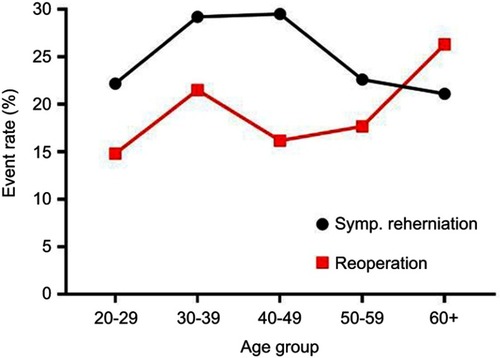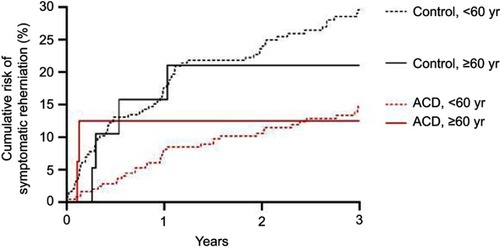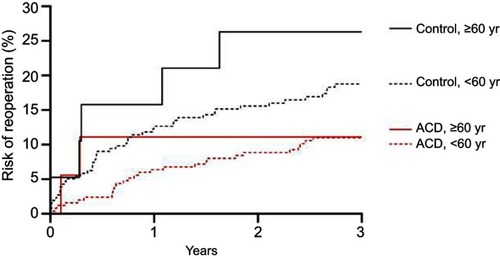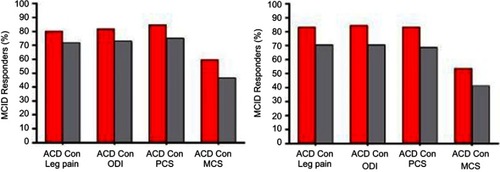Figures & data
Figure 1 Rates of symptomatic (Symp) reherniation and reoperation over 3 years after lumbar discectomy by age group.

Figure 2 Risk of symptomatic reherniation over 3 years after lumbar discectomy with or without an annular closure device among older versus younger patients. The risk of symptomatic reherniation over 3 years was 30.2% (SE 3.1%) in younger controls, 21.1% (SE 9.4%) in older controls, 14.8% (SE 2.3%) in younger ACD patients, and 12.5% (SE 8.3%) in older ACD patients.

Figure 3 Risk of reoperation over 3 years after lumbar discectomy with or without an annular closure device among older versus younger patients. The risk of reoperation over 3 years was 26.3% (SE 10.1%) in older controls, 18.8% (SE 2.5%) in younger controls, 11.1% (SE 7.4%) in older ACD patients, and 11.0% (SE 2.0%) in younger ACD patients.

Figure 4 Percentage of patients who achieved the MCID without a reoperation over 3 years after lumbar discectomy with or without an annular closure device for each patient-reported outcome among patients under 60 years old (left panel)a and patients at least 60 years old (right panel)b. aAmong younger patients comparing ACD to controls, the rates were 80.4% vs 72.0% for leg pain, 81.9% vs 73.0% for ODI, 84.9% vs 75.1% for PCS, and 59.8% vs 46.5% for MCS. bAmong older patients comparing ACD to controls, the rates were 83.3% vs 70.6% for leg pain, 84.6% vs 70.6% for ODI, 83.3% vs 68.8% for PCS, and 53.8% vs 41.2% for MCS.

Table 1 Preoperative characteristics of older versus younger patients treated with lumbar discectomya
Table 2 Predictors of symptomatic reherniation and reoperation risk over 3 years after lumbar discectomy
Table 3 Results of annular closure device postmarket registries by age group
Table S1 List of participating centers and patient enrollment totals
